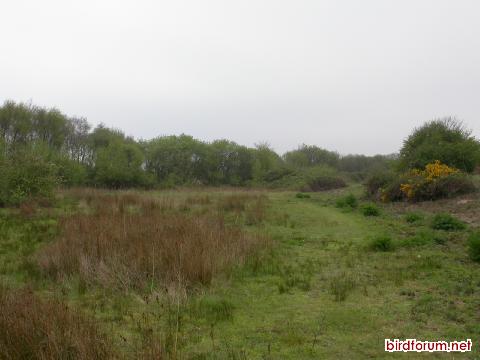| This article is incomplete. This article is missing one or more sections. You can help the BirdForum Opus by expanding it. |
Overview
The Exe Estuary extends south from Topsham, where it is joined by its tributary the Clyst, to Exmouth; but it is tidal as high as St James' Weir, Exeter. At its upper end are several RSPB nature reserves, on coastal grazing marshes and floodplain; on the east side are Bowling Green Marsh and Darts Farm; on the west are Matford Pools, Exminster and Powderham Marshes. Opposite Exmouth is the sand spit of Dawlish Warren NNR.
Birds
Notable Species
This spot in south Devon holds a huge number of species, but is probably best known for wintering waders and wildfowl. Up to 400 Avocet winter on the Exe Estuary and surrounding reserves such as Bowling Green Marsh. Large numbers of other waders include Golden Plover, Grey Plover, Bar-tailed Godwit and Black-tailed Godwit, Knot, Sanderling, Greenshank, and numerous commoner species such as Eurasian Curlew, Lapwing, Ringed Plover and Common Redshank.
There is a nationally important wintering population of Dark-bellied Brent Goose. Most of these feed towards the estuary mouth at Dawlish Warren. Here you can see Sea Ducks such as Common and Velvet Scoter in winter as well as Eider in small numbers. Numerous other wildfowl join the waders on the estuary at low tide. Wigeon, Teal, Shoveler, Shelduck, Pintail, and a handful of diving ducks including Goldeneye can be found. At high tide, many of these are found at Bowling Green Marsh, and Exminster Marshes, on opposite sides of the estuary.
The Exe area is surrounded by farmland, and holds many farmland species including the scarce Cirl Bunting.
Rarities
Eurasian Spoonbill, Pectoral Sandpiper, Broad-billed Sandpiper, Green-winged Teal. The UK's first Long-billed Murrelet was found near the Exe seafront. Lesser Scaup and Glossy Ibis have been seen. 4 Cranes spent a few weeks in the area in 2006.
Check-list
To do
Other Wildlife
To do
Site Information
Recommend going either just before or just after high tide (forces birds closer to banks).
History and Use
To do
Areas of Interest
High tide generally moves waders and geese off the estuary on to surrounding fields: good areas (clockwise) are Oak Meadow (golf course) at Starcross, Powderham Park, Powderham Marshes RSPB, Exminster Marshes RSPB and Bowling Green Marsh RSPB.
Access and Facilities
Access to Exminster Marshes (west side) is via a car park near the Swans Nest pub off the A379 to Dawlish. Access to the Bowling Green Marsh (east side) is via Topsham. You can also stop pretty much anywhere along the estuary bank all the way down to Exmouth (east side) and Dawlish (west side). An RSPB Avocet cruise in Winter is a good way to get closer to the birds on the Estuary, advance booking advisable. Details on RSPB website.
Toilets on main quay in Topsham, near the railway station in Starcross, and at Dawlish Warren.
Grid reference: SX954872 (Exminster Marshes RSPB car park).
Contact Details
Tel: 01392 824614 (RSPB)
References
- RSPB: Bowling Green Marsh
- RSPB: Darts Farm
- RSPB: Matford Marsh
- RSPB: Exminster and Powderham Marshes
- Exe Estuary Reserve on Streetmap
External Links
Content and images originally posted by Jyothi Ray




